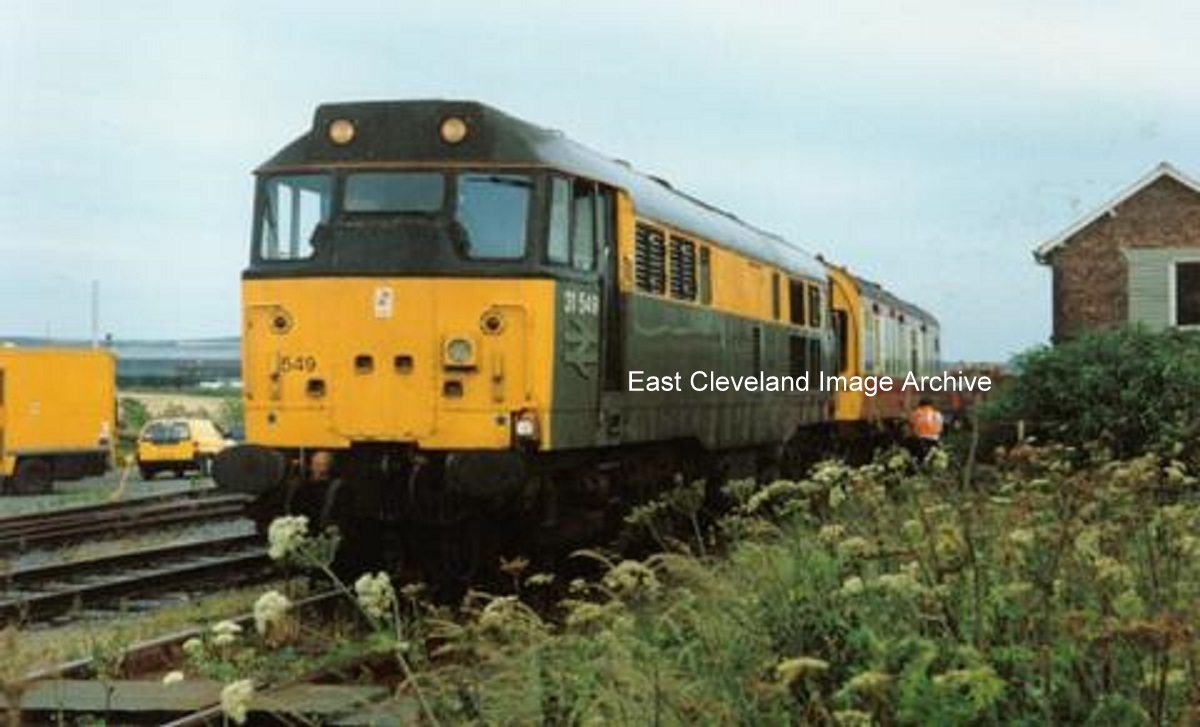
Looks like they got it fixed – it’s now sat level on the 4 foot – running lights are on and the engineers are retiring to their carriage. (no doubt for tea and tiffin!).
Image courtesy of Russ Pigott.
|
|
||
 Looks like they got it fixed – it’s now sat level on the 4 foot – running lights are on and the engineers are retiring to their carriage. (no doubt for tea and tiffin!). Image courtesy of Russ Pigott. 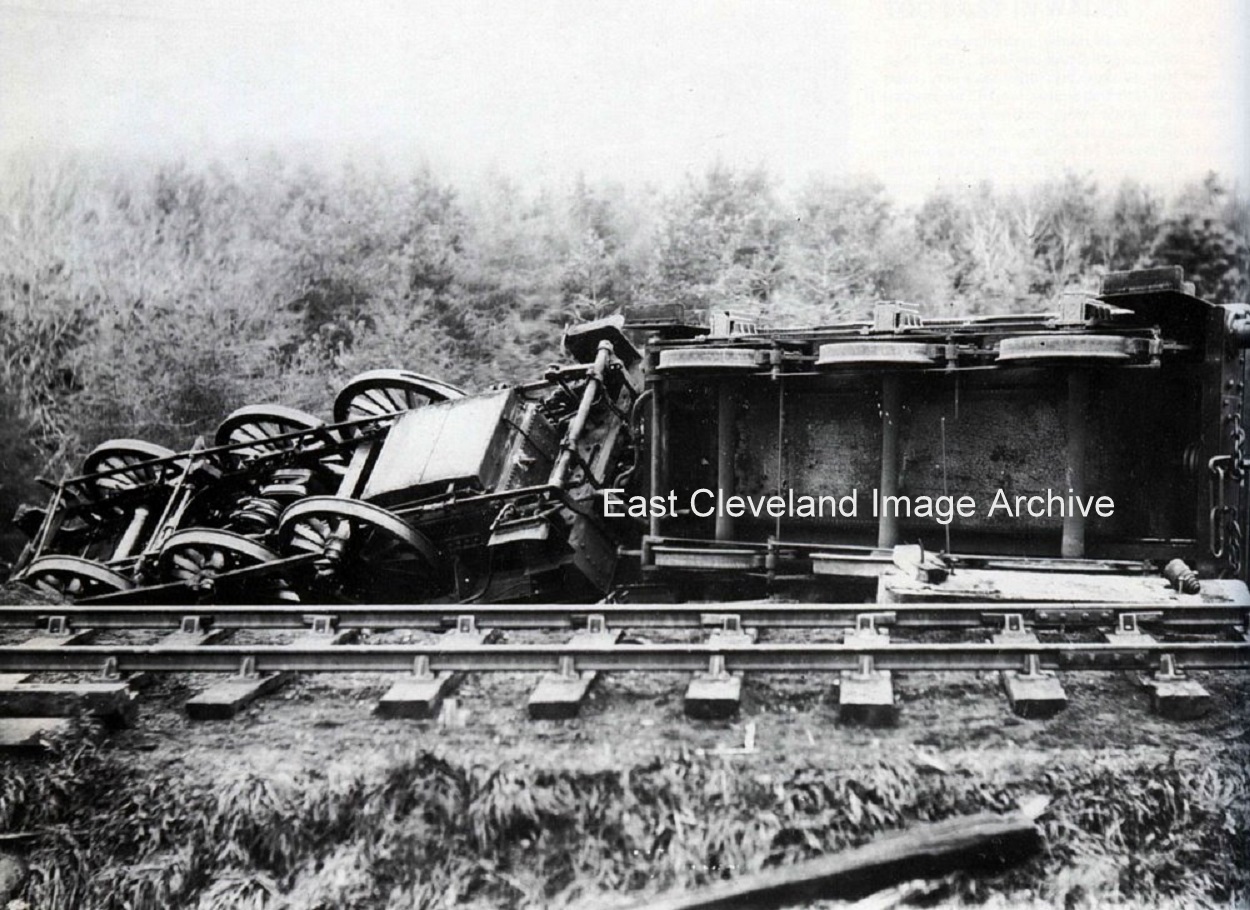 Lingdale Junction, recovery of engine N0. 1245, the accident on 5th November 1900 took place at the junction of two mineral branches near Brotton. A train loaded with ironstone descending from Lingdale mines got out of control on the 1 in 6 gradient and was derailed at trap points at the junction with Kilton branch. The engine 0-6-0 No. 1245 built at Darlington 1783, which was running tender first, at this point the line was on an embankment, when No.1245 was derailed it fell onto it’s right hand side on the slope of the embankment. It was recovered using two sets of block and tackle anchored to the rails on which the engine stood to keep them in place. Two further engines were attached to the tackle and as they moved away from one another No. 1245 was pulled upright. Image and information courtesy of Derick Pearson. 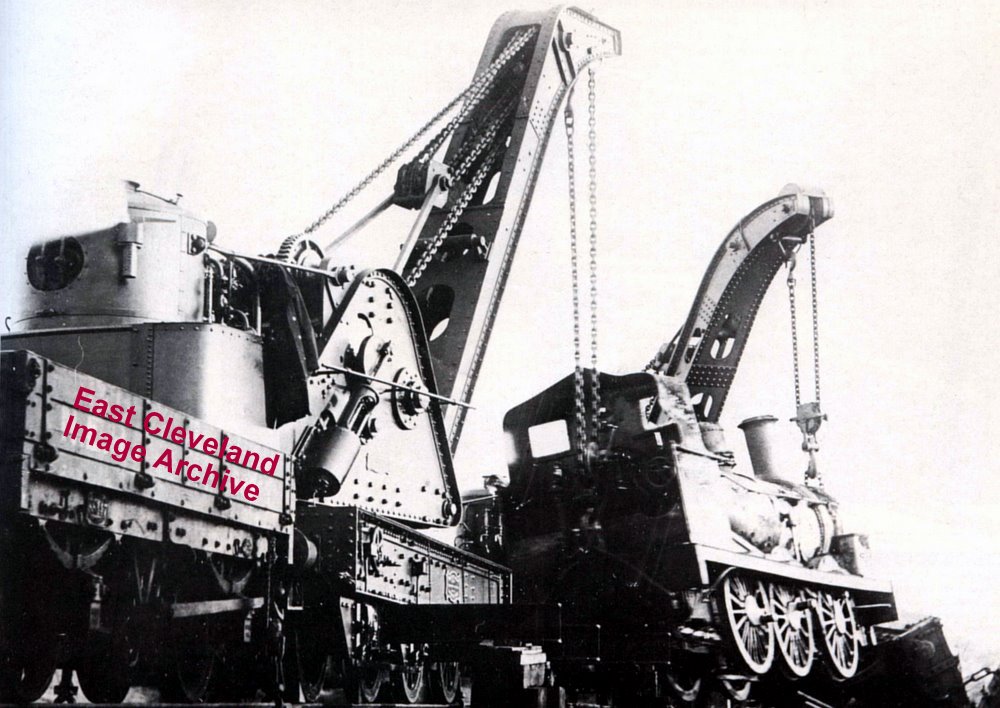 The second photograph of the derailing at Lingdale, with some serious lifting gear in use! Two steam cranes being used to lift the locomotive back onto the rails. The accident report lists: “No.1245 was recovered using two sets of block and tackle anchored to the rails on which the engine stood to keep them in place. Two further engines were attached to the tackle and as they moved away from one another No. 1245 was pulled upright.“ Image courtesy of Derick Pearson, the Pem Holliday Collection and others. 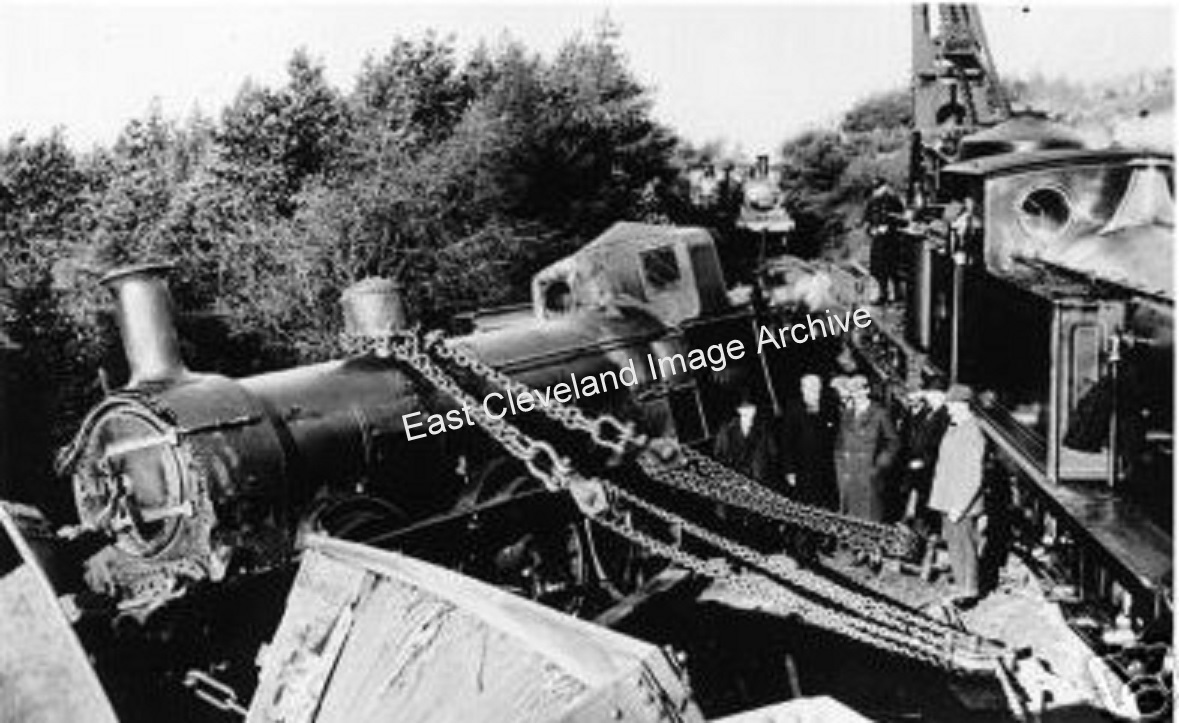 A good engineering image this; showing the delicate job of righting a fallen locomotive using good old block and tackle! We can’t dispute the location, mostly because the line no longer exists, but also because there’s precious little film record of the line anyway. The crane on the engineering train is a vertical boilered steam crane. Simon Chapman advises: ”The date was November 1900, the engine was no. 1248, and the driver’s name was Metcalfe! The train was descending the gradient from Lingdale Mine with 22 loaded iron ore wagons and couldn’t stop in time so ran through the headshunt and was derailed, fortunately with no injuries to the crew.” Update information courtesy of Simon Chapman. 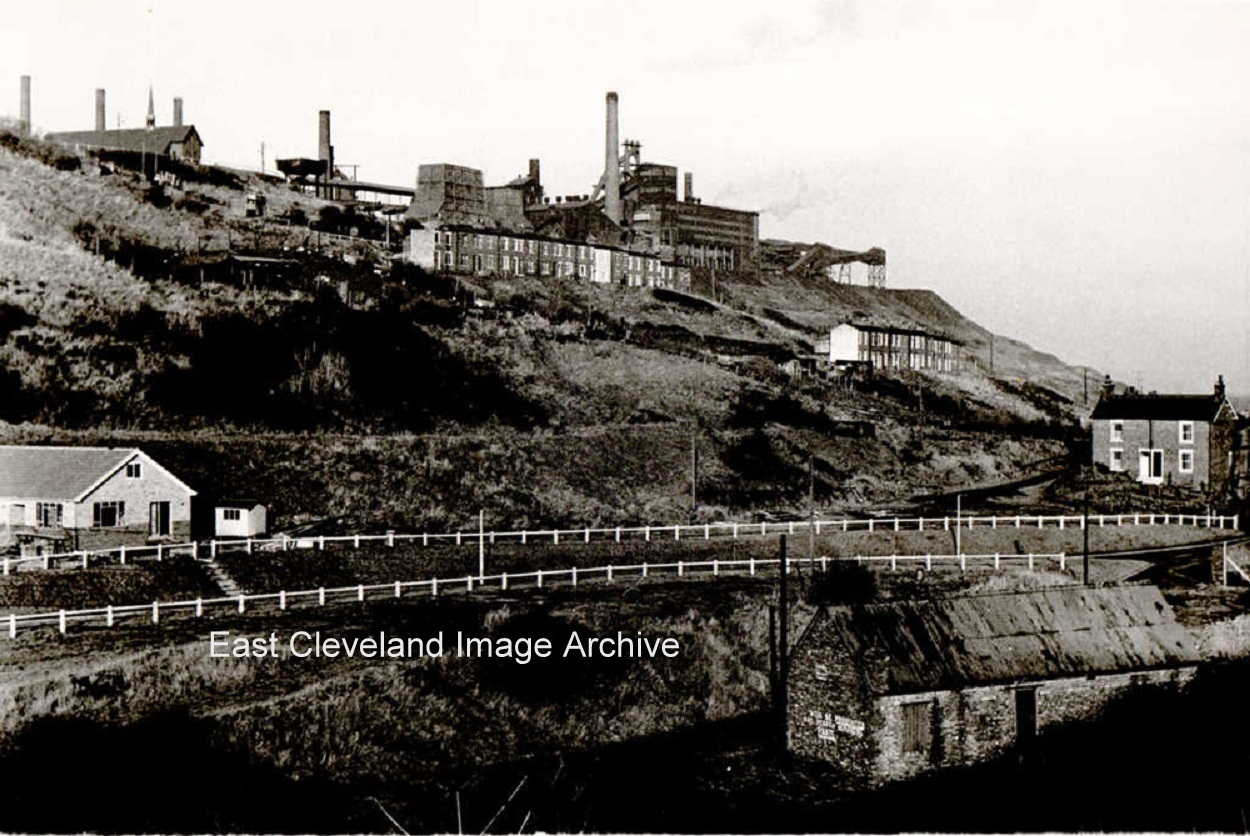 As the road leads us into Skinningrove we can see on the right hand side the Station Master’s house, the two rows of houses are Primrose Hill and on the skyline with the works is St. Helen’s Church. This view after the majority of the gas works had been demolished, still shows the building later known as ‘Brookside Motors’ featuring in a more recent post on the Archive. Image courtesy of Eric Johnson and others. 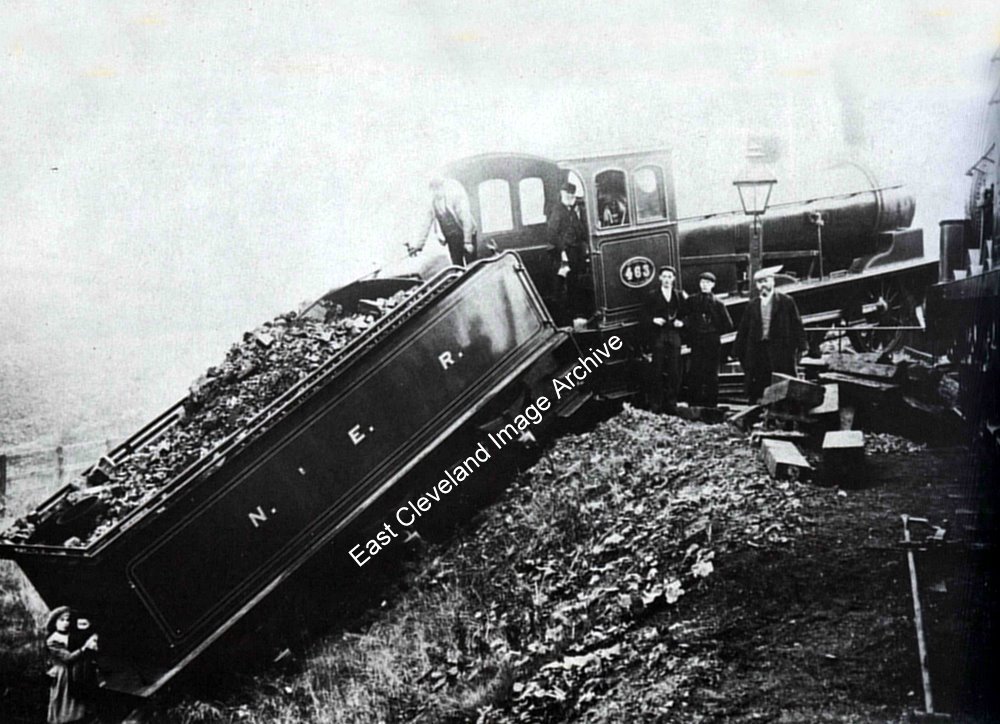 The N.E.R engine is a J25 0-6-0 type and numbered 463. I am not sure about this but was told it was around 1910 but hope someone would confirm it. D. A. Twigg has provided more information: “Here are some details about the life of the Locomotive in the photograph. NER 463 built Dec/1899 : Re-numbered for LNER (1946) as 5689. Re- numbered for BR as 65689 , Jan /1949. Locomotive Specifics Designer W. Worsdell : Class J25 : Wheels 0-6-0; Builder Darlington Works : To Service During Dec/1899. Withdrawal week ending Monday 31/05/1954 : Service Life 54 years, 6 months, 1 day. 01/01/1948 Allocation West Auckland (AUK). Image courtesy of Derick Pearson, the Pem Holliday Collection and others, thanks to D. A Twigg for the update on the locomotive. 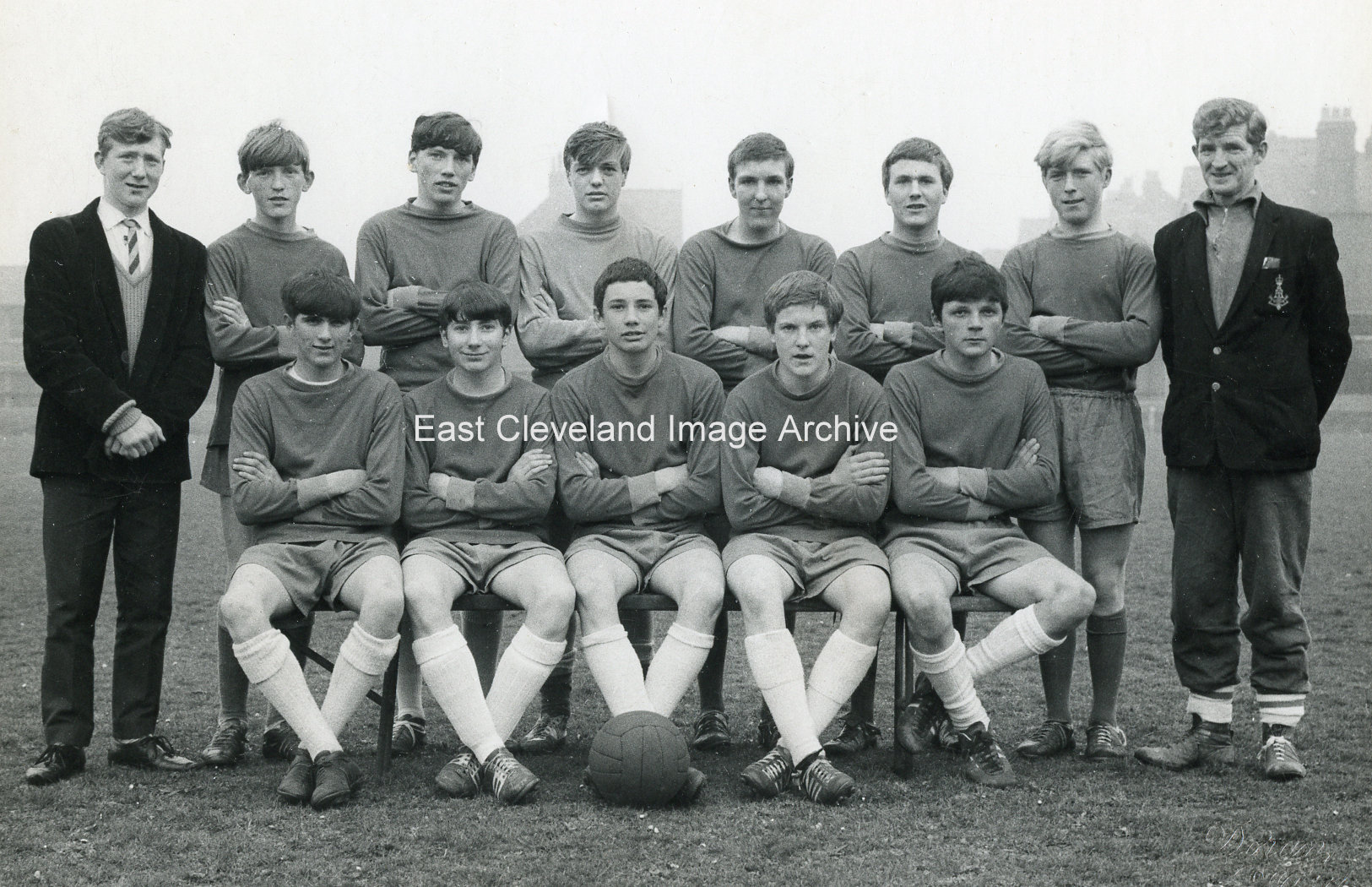 When supplied to the Archive this image of Staithes Under 16 Football team listed players with initials; however following many contribtors the team can be presented as: Back row:Ken Gibson, Joe Crooks, John Stone, Richard? Nicholson, Tony ”Tosh” Welford, Godfrey ”Fudge” Evans, John Hicks, Jack Bowes ”Cockbod”. Owen Rooks told the Archive: “I have seen this photograph on Don Burluraux’s NYMWebcam website captioned ‘Staithes Juniors 1965/66’.” David Archer advised: “John Stone played pro for Boro & Grimsby.” R. Simpson added: “John Stone also played for York City after Middlesbrough let him go.” Image courtesy of Kathleen Hicks (copyright – Doran, Whitby); also thanks to Derick Pearson, Robert Doe, Owen Rooks, David Archer, R. Simpson and D. Crooks for all the names. Especial thanks to William Hinchley for ”Cockbod”, so named as ”he sang Old Mc Donalds Farm ans when it got to the cock began to crow he did a very realistic crow”. 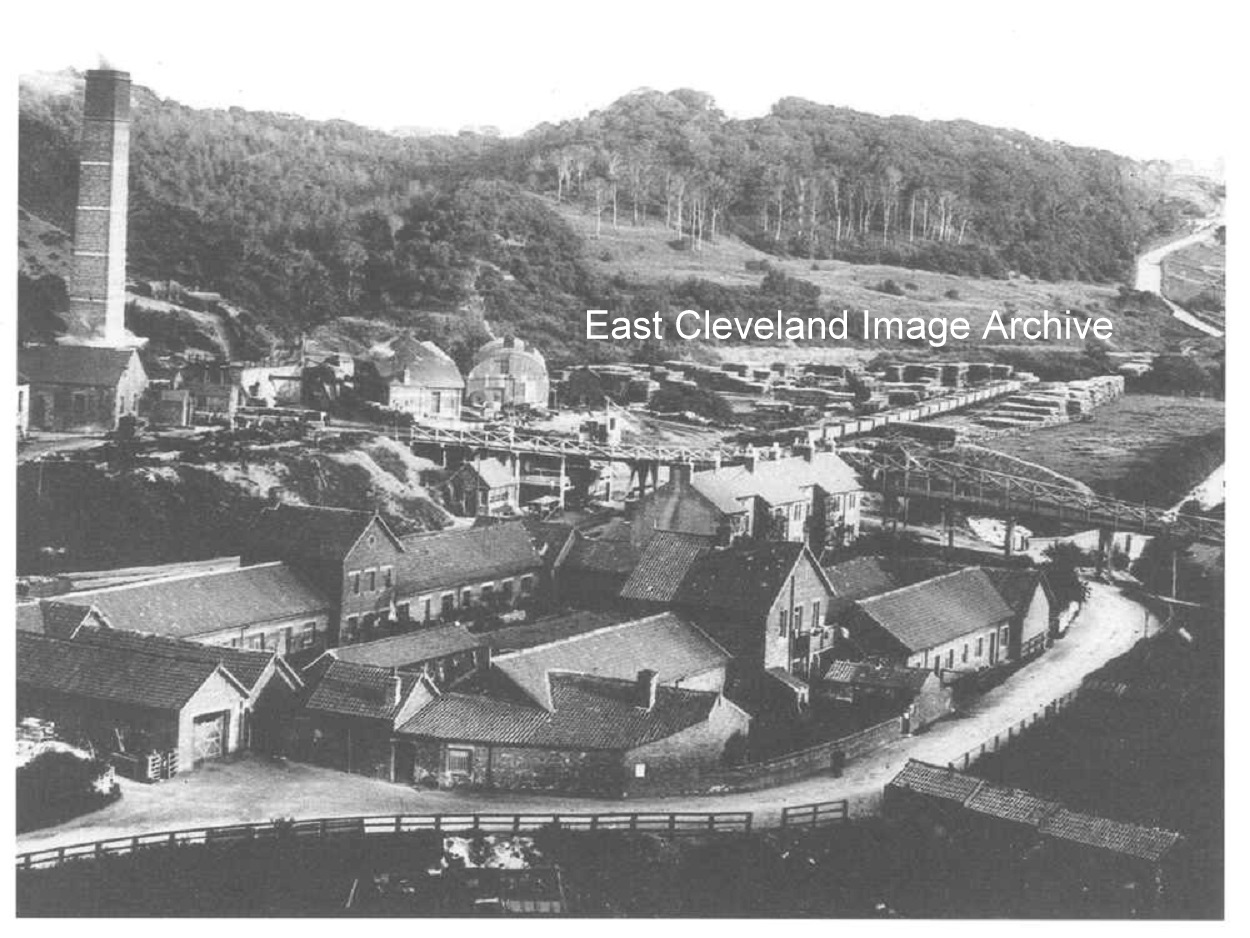 Loftus Mine at full production in about 1900. More popularly known as Skinningrove mine, in the picture it is possible to see at the right hand side is what was known as the wood yard where the wood for the pit props was stored. Mill Bank is just visible at the far right and in the foreground are the stables. These are the surface stables, access inbye to the mine was via the Horse Drift. The underground stables were situated underneath Loftus Town Hall, there were stalls for 16 horses; with provisions for fodder and water, etc. Harold Found, an ex-miner tells us: ”The stables were kept immaculate.” As a new miner he spent time at the blacksmiths next door, assisting the blacksmith with shoeing horses, etc. Image courtesy of the Pem Holliday Collection and others, thanks to Harold Found for this update. 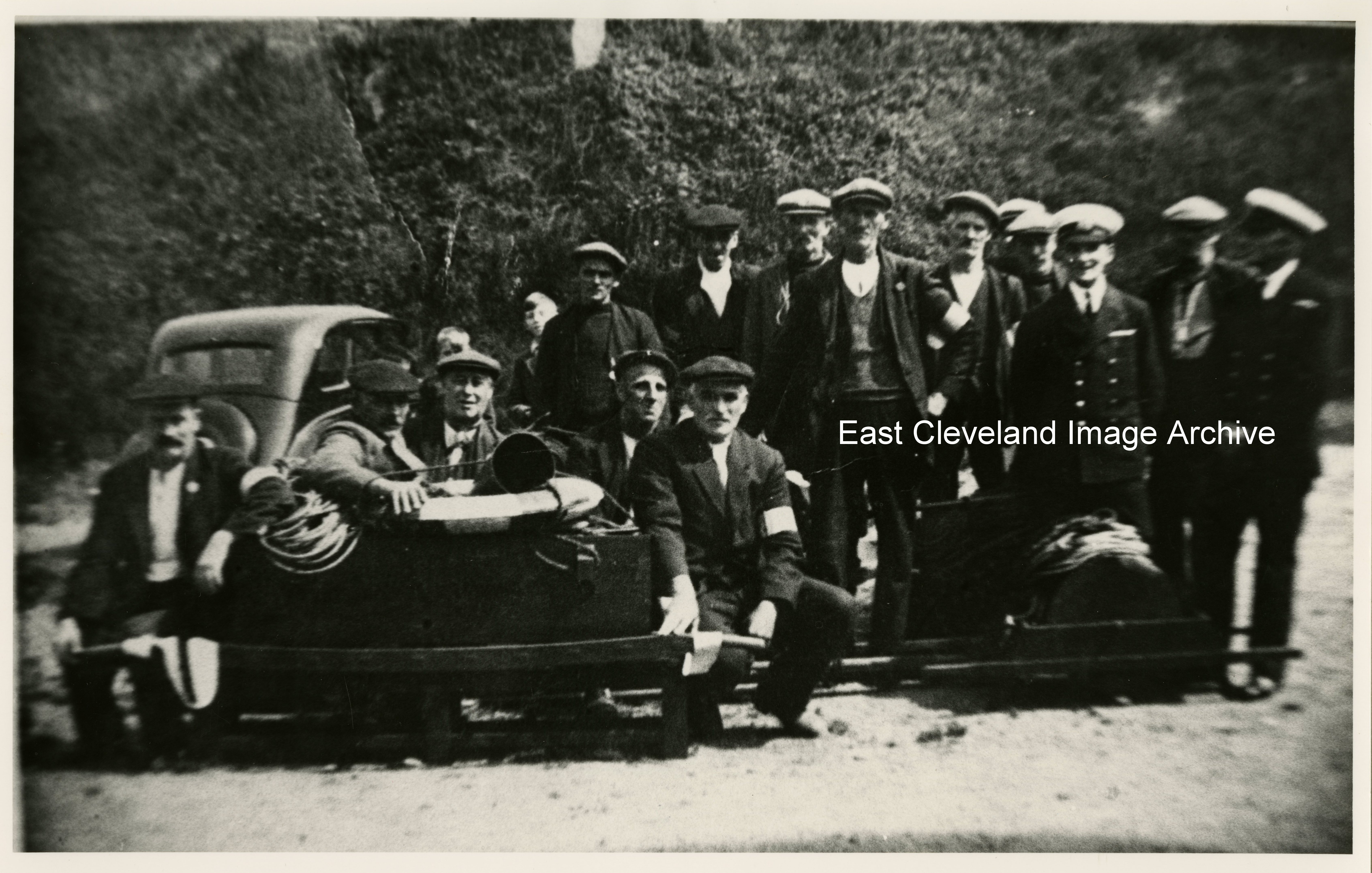 Rocket Practise with the Skinningrove Coastguards. So far we have been told (excluding boys in photograph): Back row: Mr Wheatman, John Kennedy, ? Hart, Jim Hart, Jim Green, Jim Kennedy, ??, ??, ??. Front row (seated): Mr Richards, Do-Do Cox, Chuck Laity, Major Lightfoot. Skinningrove Auxiliary Coastguards were formed at the same time as the Home Guard and worked alongside each other. They comprised men too old for active service and those like miners in reserved occupations which excluded them from active service. Their role was to man the observation posts and watch out for U-boats on the surface and aircraft dropping mines also drifting mines. They used the local Gas Board wagon to transport the equipment to the cliff top. John Kennedy tells us: ”My Dad John Kennedy told me the story of when at the beginning of the war they were issued with a rifle and a box of ammunition. An argument took place between the home guard and Coastguards to who should have it. In the end they agreed that the home guard should have the rifle and the coastguard the ammunition. Mr Mainwaring springs to mind.” The Archive requested assistance with additional names. Pat Sparkes advised: “My Uncle Major Lightfoot sitting behind the gentleman with the arm band. Standing directly behind the same man with the arm band could be my grandad John Kennedy. not positive but it looks like him.” John Kennedy further assisted with: “Pat is correct. this is a photo of the Skinningrove auxiliary coastguards Rocket practise. They used to practice firing a rocket with a rope attached. The idea being to then send a Breech’s boy to the wrecked ship to rescue the crew. They used the local Gas board wagon to transport the equipment to the cliff top. Jimmy Hewison drove the lorry. Also in the picture is Jim Kennedy,(John Kennedy’s brother and Major Lightfoot was their brother in law. Major was his name not rank) also Chuck Laity, Kruger Hart, Mr Wheatman (First Aid man) and I believe Do- Do Cox and Jim Green.” Image courtesy of the Pem Holliday Collection and thanks to John Kennedy and Pat Sparkes for the updates. 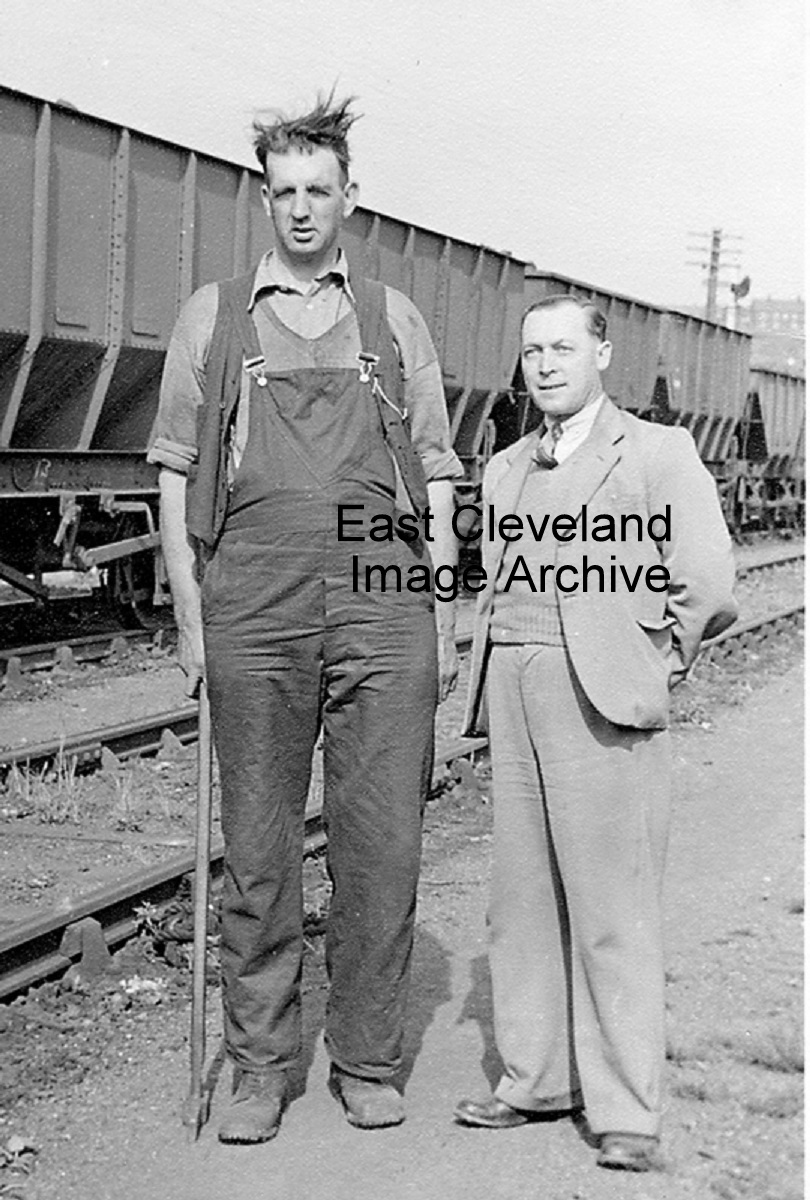 After making the comment about Tom George’s height on the Post Liverton Mines chapel, Ray Brown asked his daughter Iris Knight if the Archive could post this image. Tom was employed on Skinningrove Iron works, and by the look of it he was in the platelayers gang. He sports a hammer that was used to relocate the wooden chocks that had come out of the rail chairs. I think you will agree that he was a tall man for his time, but very much a gentle giant. Tom was very well known in both Liverton Mines and Loftus. Jen Trembath tells us: ”I believe the man he is with to be my uncle – Horace Trembath – who lived in Skinningrove”. Richard Barnes asked: “If I remember rightly did he not run a little shop in Liverton Mines in Downe Street?” Image and commentary courtesy of Ray Brown and many thanks to Jen Trembath and Richard Barnes for the updates. |
||
Recent Comments